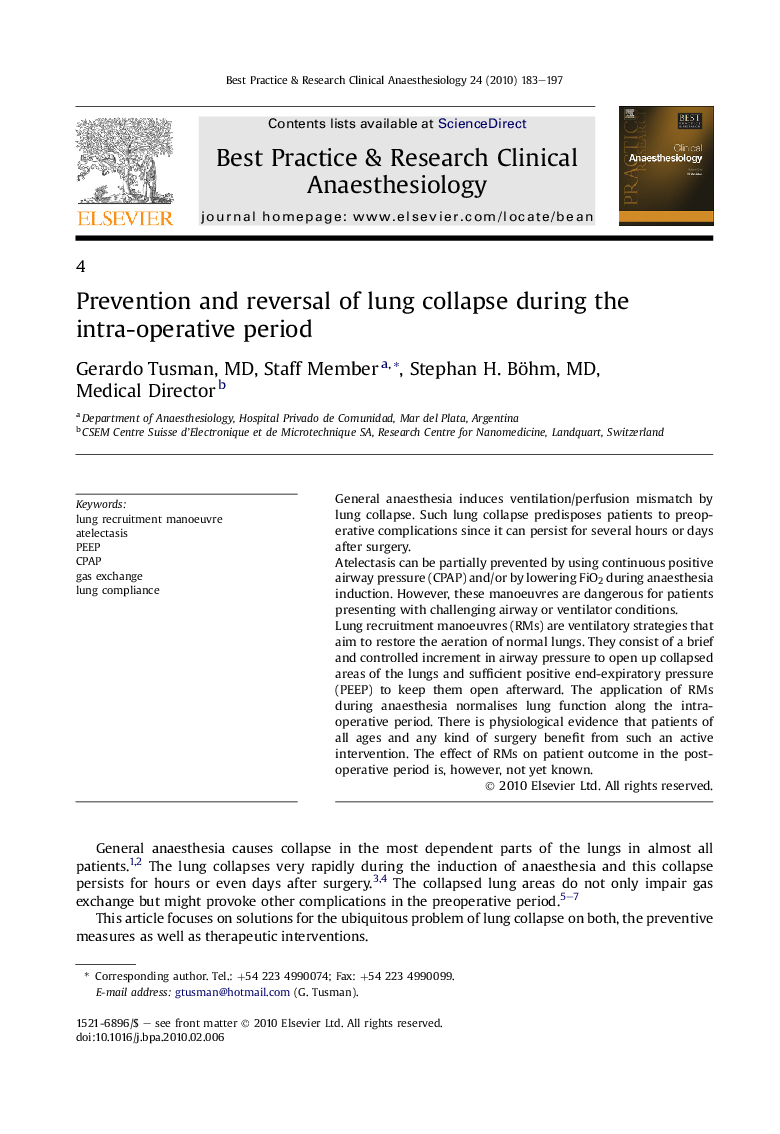| Article ID | Journal | Published Year | Pages | File Type |
|---|---|---|---|---|
| 2748792 | Best Practice & Research Clinical Anaesthesiology | 2010 | 15 Pages |
General anaesthesia induces ventilation/perfusion mismatch by lung collapse. Such lung collapse predisposes patients to preoperative complications since it can persist for several hours or days after surgery.Atelectasis can be partially prevented by using continuous positive airway pressure (CPAP) and/or by lowering FiO2 during anaesthesia induction. However, these manoeuvres are dangerous for patients presenting with challenging airway or ventilator conditions.Lung recruitment manoeuvres (RMs) are ventilatory strategies that aim to restore the aeration of normal lungs. They consist of a brief and controlled increment in airway pressure to open up collapsed areas of the lungs and sufficient positive end-expiratory pressure (PEEP) to keep them open afterward. The application of RMs during anaesthesia normalises lung function along the intra-operative period. There is physiological evidence that patients of all ages and any kind of surgery benefit from such an active intervention. The effect of RMs on patient outcome in the postoperative period is, however, not yet known.
